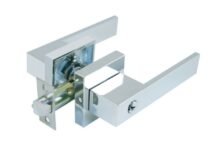The Most Important Components to Ensure a Safe Home
As homeowners, we are constantly exposed to a variety of threats that can compromise the safety and security of our homes. It is crucial to be aware of these risks and take proactive measures to protect our living spaces from potential harm. In this article, we will discuss some of the most common threats that homeowners face and explore the key components to ensure a safe home.

Read this article and do not forget to check the YouTube channel “City Prepping” for amazing videos:
https://www.youtube.com/@CityPrepping
10 Easy & Inexpensive Hacks to Burglar-Proof Your Home (video)
1. Burglary and Theft
Burglary and theft are unfortunately common occurrences that can leave homeowners feeling violated and vulnerable. To safeguard your home against these threats, consider implementing the following measures:
- Install a reliable security system: A comprehensive security system that includes surveillance cameras, motion sensors, and an alarm system can act as a deterrent and provide valuable evidence in the event of a break-in.
- Secure doors and windows: Reinforce entry points by installing sturdy locks, deadbolts, and window security film. Consider using smart locks that allow you to control access remotely.
- Keep your property well-lit: Adequate outdoor lighting can discourage potential intruders from targeting your home. Install motion-activated lights around the perimeter and ensure that all entry points are well-illuminated.
- Get to know your neighbors: Building a strong community network can be an effective way to prevent crime. Look out for each other and report any suspicious activities to the authorities.
2. Damage from Fire
A fire can cause devastating damage to your home and put the lives of your loved ones at risk. To minimize the risk of fire and mitigate its impact, consider the following safety measures:
- Install smoke detectors: Place smoke detectors on every level of your home, especially near bedrooms. Test them regularly and replace batteries as needed.
- Have a fire extinguisher: Keep a fire extinguisher in easily accessible areas, such as the kitchen and garage. Make sure everyone in your household knows how to use it.
- Create a fire escape plan: Develop a detailed escape plan and practice it with your family. Identify multiple exit routes and establish a meeting point outside your home.
- Reduce fire hazards: Keep flammable materials away from heat sources, unplug appliances when not in use, and avoid overloading electrical outlets.
3. Water Damage and Flooding
Water damage and flooding can cause significant harm to your property and lead to costly repairs. To protect your home from water-related issues, consider the following preventive measures:
- Maintain your gutters and downspouts: Regularly clean and inspect your gutters to ensure that they are free from debris and functioning properly. Redirect downspouts away from your home’s foundation.
- Install a sump pump: If your area is prone to flooding, consider installing a sump pump in your basement or crawl space. This can help prevent water accumulation and minimize damage.
- Check for leaks: Regularly inspect your plumbing system for any leaks or signs of water damage. Promptly address any issues to prevent further damage.
- Invest in flood insurance: Depending on your location, it may be wise to invest in flood insurance to protect your home and belongings in the event of a flood.
4. Cyber Attacks Affecting Smart Home Systems
In today’s interconnected world, smart home systems have become increasingly popular. However, they also present new vulnerabilities that can be exploited by cybercriminals. To safeguard your smart home from cyber attacks, consider the following measures:
- Secure your Wi-Fi network: Change the default password of your Wi-Fi router and enable encryption. Regularly update the firmware to ensure that you have the latest security patches.
- Use strong, unique passwords: Create strong passwords for all your smart devices and avoid using the same password for multiple accounts. Consider using a password manager to securely store and generate passwords.
- Keep software up to date: Regularly update the firmware and software of your smart devices to protect against known vulnerabilities. Enable automatic updates whenever possible.
- Disable unnecessary features: Disable any features or services on your smart devices that you do not use. This can help reduce potential entry points for cybercriminals.
Conclusion
Being aware of the potential threats that can compromise the safety and security of your home is the first step towards ensuring a safe living environment. By implementing the key components discussed in this article, such as a reliable security system, fire safety measures, preventive measures against water damage, and cybersecurity precautions for smart home systems, you can significantly reduce the risk of harm to your home and loved ones. Stay proactive, stay vigilant, and prioritize the safety of your home.
Other related posts from our website:
https://howtobuildahouseblog.com/home-safety-measures-for-elderly-people/
https://howtobuildahouseblog.com/enhance-the-home-safety-of-your-doors-and-windows/
https://howtobuildahouseblog.com/what-are-the-essential-safety-tips-for-using-lpg-gas-at-home/
Thank you so much for your attention.
Stay tuned. We will upload many other amazing posts to our website and videos onto our YouTube channel.
Thank you so much.
for your time and attention.
Best Regards
See you to another post,
Bye, Bye


